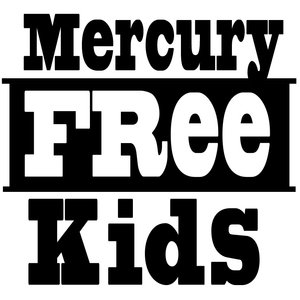If you have any gut health issues, eat your greens and take lots of PABA.
A single course of antibiotics can permanently throw off the microbiomes in our bodies, including those living in our intestines and on our skin.
Wikipedia says, “Sulfonamide drugs are structurally similar to PABA, , para-aminobenzoic acid, and their antibacterial activity is due to their ability to interfere with the conversion of PABA to folate. Thus, bacterial growth is limited through folate deficiency.”
If I understand this correctly, it means that antibiotics interfere with a natural process in my body, by literally starving to death the bacteria that feeds on folate.
Wikipedia also goes on to say, “In humans, PABA is considered nonessential… because most people have colon bacteria that generate PABA. …And many bacteria, including those found in the human intestines, like E. coli, generate PABA.”
Why on earth would wikipedia say that PABA is nonessential? This sounds like misinformation hard at work.
PABA is involved in the production of folate. Folate is necessary for proper brain function, and is concentrated in the brain, spinal column, and extra-cellular fluids. It is essential for mental and emotional health. White blood cells called neutrophils use folate to make hydrochloric acid, which helps prevents food poisoning and the growth of parasites.
Folate is derived from the word foliage! Human foliage includes green leafy vegetables, and green foods like broccoli. When we are not getting enough folate, we need our intestinal bacteria to make it for us, and if our good intestinal bacteria, like E. Coli are prevented from doing so, or are nonexistent, our health will suffer. When would we not get enough folate? In the wintertime when we would be dependent on our gut bacteria to produce PABA, that is then used to make folate.
I believe the following statements from these two websites to be misinformation.
Truth in Aging has this to say about PABA. “The Cosmetic Database notes that PABA is a high hazard ingredient and causes neurotoxicity, organ toxicity, cancer, allergic reactions, reproductive toxicity, cellular changes, and immunotoxicity.”
Livestrong says, “When PABA is administered orally, it can have harmful effects on the liver, according to "Foundations of Nursing." According to "Introduction to Medical-Surgical Nursing," the liver is affected when PABA is consumed in amounts equal to or greater than 8g. When this amount of PABA is consumed, the liver loses its ability to function properly, which can ultimately lead to liver failure, according to "Foundations of Nursing." Liver failure leads to death without prompt medical care, according to "Introduction to Medical-Surgical Nursing."
It’s interesting to note that when I search Livestrong for PABA, I get a lecture on liver failure. Are they trying to scare me away from PABA? Remember, one course of antibiotics can completely kill off the bacteria in my body that make PABA, that my body needs to make folate. The woman who got liver failure recovered when she discontinued use. She was taking 8 grams of PABA, that's 16 - 500mg pills a day.
If you take double the dose of Tylenol you could end up with permanent liver failure. Yep, it's misinformation at work.
What else does Wiki have to say about PABA? “Despite the lack of any recognized syndromes of PABA deficiency in humans, except for a few people who lack the bacteria that generate PABA in their colons, many claims of benefit are made by commercial suppliers of PABA as a nutritional supplement. Benefit is claimed for fatigue, irritability, depression, weeping eczema (moist eczema), scleroderma (premature hardening of skin), patchy pigment loss in skin, and premature grey hair.”
That’s alot of issues regarding PABA. Are these just claims from Quack websites?
Let’s check WebMD, normally a very pro-pharma website.
“PABA is taken by mouth for skin conditions including vitiligo, pemphigus, dermatomyositis, morphea, lymphoblastoma cutis, Peyronie's disease, and scleroderma. PABA is also used to treat infertility in women, arthritis, "tired blood" (anemia), rheumatic fever, constipation, systemic lupus erythematosus (SLE), and headaches. It is also used to darken gray hair, prevent hair loss, make skin look younger, and prevent sunburn.
PABA is best known as a sunscreen that is applied to the skin (used topically).
PABA doesn't seem to be taken by mouth as often as it used to be, possibly because some people question its safety and effectiveness.”
That’s an incredible list of symptoms treated by PABA.
When were sulfa drugs invented? For several years in the late 1930s, hundreds of manufacturers produced tens of thousands of tons of myriad forms of sulfa.
When was penicillin introduced? People began using penicillin to treat infections in 1942.
So where are the peer reviewed studies? There were some incomplete studies done in the 1940’s. Did PABA supplementation work so well the industry decided to ignore it? http://health.cvs.com/GetContent.aspx?token=f75979d3-9c7c-4b16-af56-3e122a3f19e3&chunkiid=21831
Additional References
The Nutritional Almanac Hard Copy and
https://en.wikipedia.org/wiki/4-Aminobenzoic_acid
https://en.wikipedia.org/wiki/Escherichia_coli
https://en.wikipedia.org/wiki/Sulfonamide_%28medicine%29
http://www.ewg.org/skindeep/ingredient.php?ingred06=704390 https://www.truthinaging.com/ingredients/paba
http://www.livestrong.com/article/303974-negative-side-effects-of-paba/
http://www.webmd.com/vitamins-supplements/ingredientmono-1004-PABA+PARA-AMINOBENZOIC+ACID+PABA.aspxactiveIngredientId=1004&activeIngredientName=PABA

